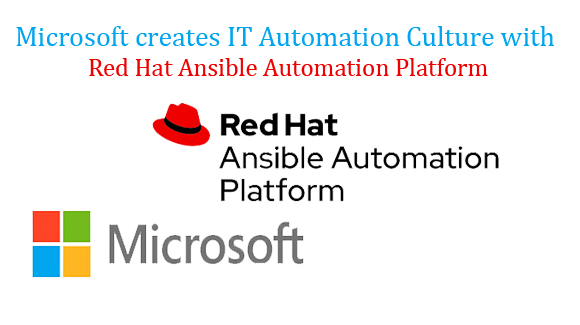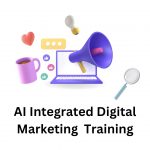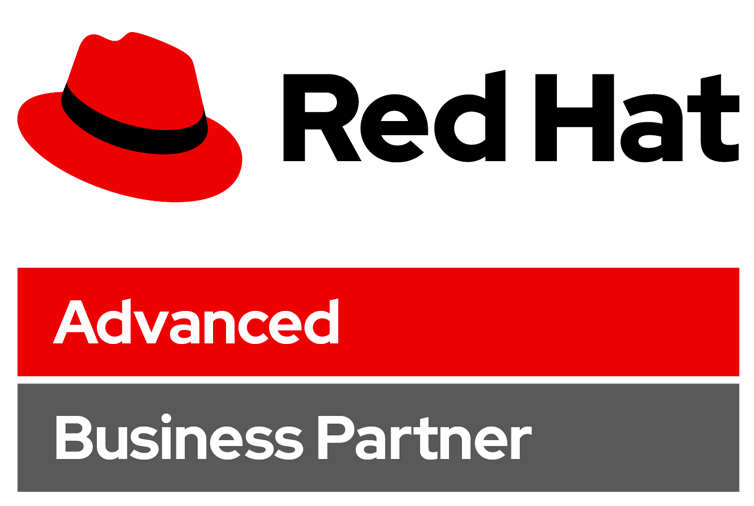Microsoft creates IT Automation Culture with Red Hat Ansible Automation Platform
OVERVIEW
To support its strategic mission, Microsoft set a goal of end-to-end digitization. This effort simplifies processes and experiences for end users across all of its infrastructure teams managing services and applications. As part of this shift, the company is focused on building a culture of success, supported by automation technology. Using Red Hat Ansible Automation Platform and working closely with Red Hat Consulting, Microsoft created a standardized, centralized network automation environment that reduces routine, repeatable tasks and complexity. DevOps teams across the company can now focus on sharing knowledge, building skills, and creating innovative technology solutions.
Benefits
- Adopted centralized, phased automation to verify and reuse production code
- Established DevOps culture focused on learning new skills and collaborating across teams
- Saved thousands of work hours by mitigating network downtime and reducing production code defects
ACCOMMODATING GROWTH WITH NEW NETWORK APPROACH
Microsoft Corporation develops, manufactures, and supports software, consumer electronics and computers, and related services. Its mission is to “empower every person and every organization on the planet to achieve more”.To support this mission, Microsoft has set a goal of end-to-end digitization, an approach that will simplify processes and experiences for end users across all of its services and applications.
Keeping pace with customer and partner expectations required addressing increased complexity across Microsoft’s corporate network infrastructure—comprising tens of thousands of endpoints, more than 400 engineers, and close to 150,000 total employees—that connects all of Microsoft’s offices, sites, and retail locations worldwide.
To simplify and scale at pace with market demands, Microsoft looked to create a scalable, technology-agnostic automation framework that would reduce manual workloads with efficient tools and processes, as well as mitigate performance and security issues with standardized, tested code. This new solution would replace its legacy production automation solution to provide comprehensive automation capabilities, supported by a more collaborative, iterative development approach.
CREATING AUTOMATION ENVIRONMENTS WITH A STRATEGIC PARTNER
As one of the largest contributors to open source, Microsoft sought an enterprise open source solution that would provide effective automation across different network vendors and create opportunities for employee engagement and collaboration. The company chose to work with its strategic partner Red Hat to adopt Red Hat Ansible Automation Platform) running in Microsoft Azure.
Microsoft’s teams established 3 automation environments:
- Development, where code is developed and tested on a small scale
- User acceptance testing (UAT), where code is peer-reviewed and tested at scale
- Production
Engineers now automate repeatable, day-to-day tasks by deploying Ansible Playbooks to the network through a centralized playbook version control system. Additionally, these 3 environments support a collaborative DevOps approach across the company’s network and engineering teams.
As part of its adoption of Ansible, Microsoft worked closely with Red Hat Consulting, including initial on-site planning in Redmond as well as ongoing architecture design and training over 9 months. For example, Microsoft teams and Red Hat architects chose GitHub as a single source code version repository.
BUILDING A CULTURE OF MODERN DEVELOPMENT
STANDARDIZED NETWORK AUTOMATION AT SCALE
Microsoft has used its staged Ansible environments to automate routine engineering tasks, such as delivery of logic-based changes to ensure services are available to customers. Events in the network trigger other workflows, such as advanced telemetry, ticketing, logging, and analytics. Ansible-based IT automation also helps the company follow a phased, iterative approach to code creation that protects code quality with scheduled releases of tested, verified network configurations.
Standardizing on a user-friendly automation solution has not only helped Microsoft solve complexity by creating a single source of truth for services, dependencies, and integrations, but also made it easier for nonengineers to focus on service creation with peer-reviewed code. DevOps teams can now work more efficiently to create new, valuable features and services for end users while maintaining production performance. This approach creates opportunities for Microsoft to continue scaling to support customer demands at a much faster pace.
MICROSOFT EMBRACES A COLLABORATIVE DEVELOPMENT MINDSET
To support its adoption of modern automation technology, Microsoft also underwent a cultural shift. There is an organization-wide commitment to learning new skills and technologies: developers are learning networking, while network engineers are learning software development and development tools like Git and Ansible.
This DevOps approach to both work tasks and professional development has led to greater understanding and collaboration between teams. One engineer created Zero to Hero, a training series on automation concepts and writing Ansible playbooks. Additionally, there are now self-hosted Python learning groups, and more than 100 active participants discuss and share information in an internal automation community. Equipped with new skills and confidence, Microsoft’s teams are finding new, creative ways to solve business challenges using code and playbooks.
MICROSOFT OPERATIONS TEAMS SAVE THOUSANDS OF HOURS OF WORK WITH ANSIBLE WORK
Implementing Ansible has helped Microsoft save thousands of work hours per year, including several weeks’ worth of work by reducing production downtime and network configuration defects. By completing code peer reviews and gated check-ins through pre-production environments, the company has reduced the amount of defects and bugs introduced into its production environment. This approach ultimately reduces major incidents and outages, improving network quality.
With the time and money saved by adopting standardized, stable automation, Microsoft’s teams can now focus on creating innovative infrastructure solutions that provide higher service quality to end users.
RETHINKING THE POSSIBILITIES OF TECHNOLOGY AND CULTURE
By focusing on people, process, and technology, Microsoft has evolved in its automation journey from manual scripting and changes to continuous integration and delivery (CI/CD) approach supported by a centralized, service-based architecture.
Red Hat and Ansible technology will continue to play an important role in Microsoft’s automation strategy—for example, as part of its strategic Network as Code vision to operate, maintain, and deploy its global networks with automation. But people remain the heart of Microsoft’s transformation and strategic growth.
ABOUT MICROSOFT
Microsoft (Nasdaq “MSFT” @microsoft) enables digital transformation for the era of an intelligent cloud and an intelligent edge. Its mission is to empower every person and every organization on the planet to achieve more.
If you would like to learn on Automation please check these courses :
RHCE : https://www.ipsr.org/rh294-red-hat-linux-automation-with-ansible-rhce.html









